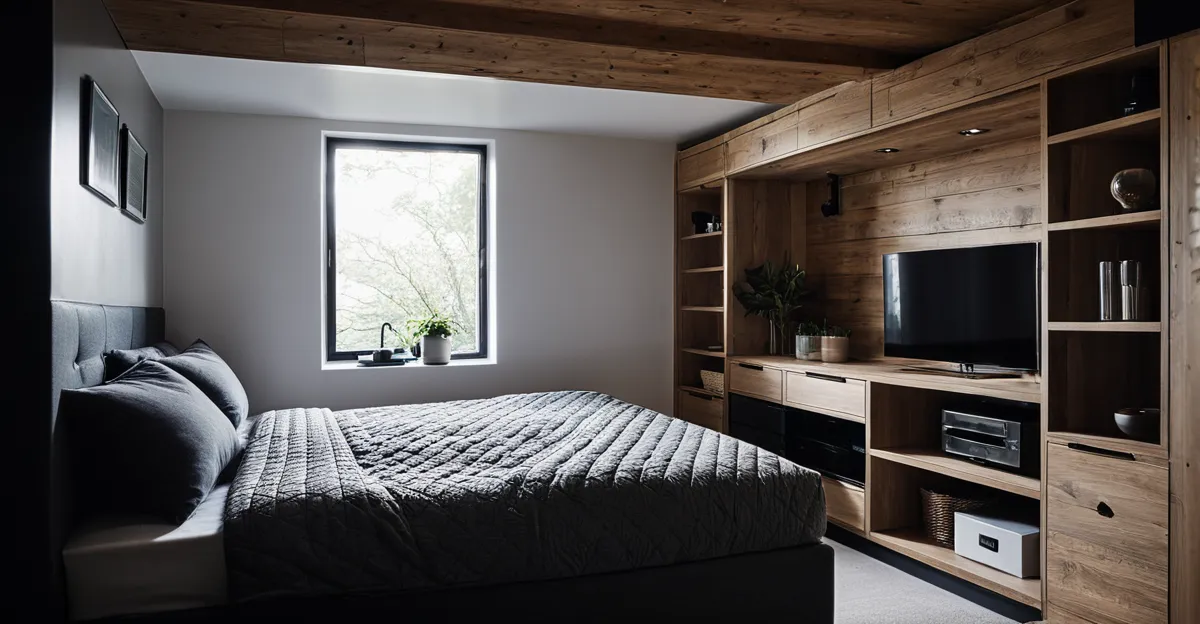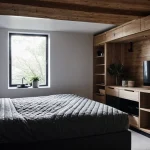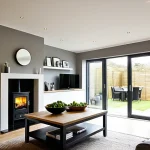Understanding the Challenges of Small Spaces
Navigating the small space challenges often requires a thoughtful approach. One of the primary limitations of small areas is the restriction on movement and functionality, which can impede daily activities. When you’re limited in square footage, organizing essentials without overcrowding is crucial. This leads to common small room issues, such as lack of storage, poor lighting, and the absence of designated zones for various activities.
Design mistakes often stem from attempting to replicate ideas suited for larger areas without adjusting for scale. Oversized furniture and dark color schemes can make a room feel even more cramped, exacerbating the limitations of small areas. Understanding these challenges is the first step towards creating a more functional and enjoyable living space.
Have you seen this : What are the best ways to integrate eco-friendly materials in UK home design?
Practical Design Strategies for Small Spaces
Transforming small areas into more livable environments involves strategic design choices. Key design strategies focus on maximizing utility while maintaining aesthetic appeal. An essential principle is to utilize vertical space effectively, which can expand storage and display options without consuming precious floor area. Wall-mounted shelves, tall bookcases, and hanging plants are practical solutions that enhance vertical space utilization.
Another critical aspect is the effective use of natural light and thoughtful color choices. Opt for lighter shades to give an illusion of spaciousness and strategically place mirrors to amplify sunlight, brightening up the space. This not only makes the area feel larger but also improves overall ambiance.
In the same genre : How Can You Transform Your UK Home Space on a Budget?
Incorporating these space optimization techniques helps create a more functional design. Understanding how to harmonize style with practicality is key in smaller settings, ensuring each element contributes to both utility and visual appeal.
Multifunctional Furniture Solutions
Navigating the intricacies of compact living requires the smart integration of multifunctional furniture. These pieces are designed to tackle small space challenges by maximizing utility without compromising style. As small spaces often demand innovative approaches, investing in space-saving furniture becomes essential.
Convertible Sofas and Beds
Convertible sofas and beds epitomize versatility, offering dual functionality in one sleek design. A convertible sofa can effortlessly transform into a bed, making it ideal for studio apartments or guest rooms. These adaptable pieces not only save space but also provide comfort and style, making them an invaluable addition to any compact home.
Expandable Tables
Expandable tables are another fantastic solution, adjusting to suit your dining needs. These tables can extend to accommodate extra guests, yet contract to save space when not in use. Their versatile designs keep your space flexible and adaptable, meeting the demands of daily life without overwhelming the room.
Storage Ottomans
Incorporating storage ottomans into your living space is a clever strategy for maintaining organization. These pieces serve dual functions—they provide seating or a footrest while also concealing clutter within hidden compartments. Opt for a style that complements your decor, enhancing both functionality and aesthetic appeal.
Overall, choosing the right multipurpose furniture not only aids in addressing the limitations of small areas but also contributes significantly to enhancing the overall ambiance and practicality of your home.
Innovative Storage Solutions
When navigating the confines of limited square footage, effective storage solutions become essential. Small spaces demand creative storage ideas to harness every inch efficiently. Utilizing under-bed storage is an excellent approach, providing a discreet yet substantial space for items like seasonal clothing or extra linens. This approach capitalizes on areas often overlooked in small space organization.
Another smart tactic involves leveraging over-door storage solutions. By installing racks or hooks on the back of doors, you can create additional space for accessories, cleaning supplies, or kitchen essentials, maintaining order without occupying floor space. Custom shelving and cabinetry also offer tailored options for organizing smaller items. Shelves that fit snugly into corners or uniquely proportioned cabinets can maximize previously unusable areas, avoiding the clutter that small spaces can easily fall prey to.
Hidden storage options further enhance organization in unconventional spaces. Consider coffee tables or benches with built-in compartments, or use decorative baskets to keep clutter at bay. These solutions smartly combine aesthetic appeal with practicality, ensuring your space remains both functional and visually pleasing. By creatively addressing storage, you enhance the usability and enjoyment of your small living area.
Creative Decor Techniques for Small Rooms
Transforming small areas into inviting and visually appealing spaces involves implementing strategic decor enhancements. Small room decor should focus on creating a sense of openness and warmth while maximizing every inch. Incorporating carefully selected elements can significantly alter the perception and functionality of a compact room.
Mirrors and lighting play crucial roles in small room decor. Strategically placed mirrors can create the illusion of added space by reflecting light and making a room appear larger than it is. This technique not only enhances natural light but also visually expands walls. Additionally, opting for layered lighting, such as a combination of overhead lights, floor lamps, and sconces, can improve ambiance and depth, ensuring the area is both functional and inviting.
When selecting palettes and themes for aesthetic enhancements, choose light and neutral colors. These tones reflect light and provide an airy feel, which is essential in small spaces. Integrating pops of color through accessories or accent walls can introduce personality without overwhelming the room. Keep patterns and textures minimal to avoid visual clutter, focusing instead on subtle details that provide richness and interest.
Decor tips for small rooms emphasize balance and proportion. Furniture and decor should be appropriately scaled to avoid a crowded appearance. Minimalistic styles often work best, allowing space to breathe while maintaining cohesiveness throughout the room. By creatively approaching decor, small areas can transform into spaces that are not only beautiful but also practical and enjoyable to inhabit.
Real-Life Examples and Case Studies
Real-life transformations highlight the ingenuity involved in tackling small space challenges. One notable example features a compact studio apartment redesigned with clever use of multifunctional furniture and strategic layout enhancements. By employing a convertible sofa bed for both seating and sleeping, the resident effectively addressed the limitations of small areas. This furniture solution allowed for an open living space during the day while providing a comfortable bed at night.
In another case study, a family living in a snug urban apartment maximized their home’s potential by integrating space-saving furniture. They installed expandable tables that adjusted to their dining needs, both functional and unobtrusive in a limited setting. The tables seamlessly expanded during gatherings yet maintained a small footprint otherwise.
Analyzing these transformations reveals how small space organization, when executed with creative storage ideas, can be incredibly effective. One apartment makeover involved the innovative use of storage ottomans and under-utilized corners for additional cabinetry, greatly enhancing tidiness without sacrificing style. These before and after examples demonstrate the practicality and necessity of versatile furniture in enhancing both the aesthetic and functionality of compact living areas.
This exploration into various small space transformations underscores the impact of thoughtful design. By learning from such case studies, homeowners can extract valuable insights and apply them to their own contexts, transforming their spaces into more livable, efficient environments.








